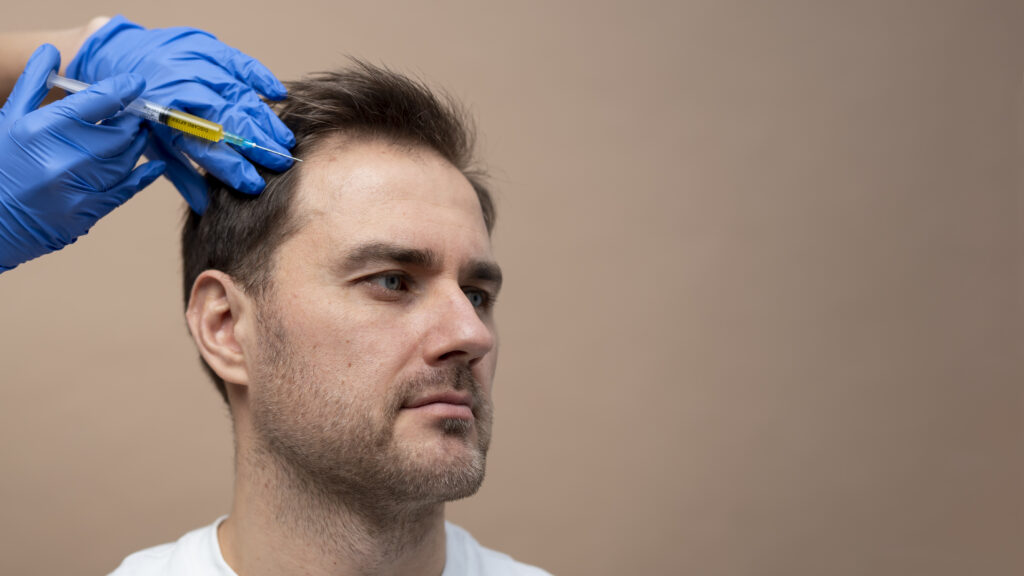
Hair loss is a common concern among men, and there’s a growing interest in finding effective solutions to restore hair and confidence. Over the years, numerous hair restoration methods have emerged, each with its own set of benefits and limitations. One method that has been gaining popularity among men is Platelet-Rich Plasma (PRP) therapy. In this blog post, we’ll explore PRP and compare it to other hair restoration methods to understand why more and more men are choosing PRP as their go-to solution.
Understanding PRP Hair Restoration
PRP therapy is a non-surgical hair restoration technique that utilizes the healing properties of your body’s own blood. The process involves drawing a small amount of your blood, processing it to concentrate the platelets, and then injecting the platelet-rich plasma back into your scalp.
The platelets in PRP contain growth factors that stimulate hair follicles, encouraging them to grow thicker and healthier hair. This natural approach to hair restoration has gained popularity due to its minimal downtime and impressive results.
Comparing PRP to Other Hair Restoration Methods
- Surgery vs. Non-Surgery:
- PRP is a non-surgical procedure, meaning it doesn’t involve incisions, stitches, or a lengthy recovery period. Other methods like hair transplants require surgery and may involve more post-operative discomfort.
- Natural vs. Artificial:
- PRP promotes hair growth naturally by utilizing your body’s own resources. In contrast, hair transplants involve the transplantation of hair from one area to another, which can be a more artificial-looking solution.
- Minimal Side Effects vs. Risks:
- PRP has minimal side effects, with the most common being mild swelling or redness at the injection site. Hair transplants, on the other hand, can have potential complications, including infection and scarring.
- Cost-Effectiveness:
- PRP is generally more cost-effective than hair transplants, which can be a significant factor for many individuals considering hair restoration.
- Gradual vs. Immediate Results:
- PRP results are gradual and typically become noticeable after a few months of treatment. Hair transplants may provide more immediate results, but the full outcome may take several months to become apparent.
- Maintenance:
- PRP may require ongoing maintenance treatments to sustain hair growth, while hair transplants are usually a one-time procedure. However, some men prefer the flexibility of maintenance treatments with PRP to continually enhance their results.
Why Men Are Opting for PRP
So, why are an increasing number of men choosing PRP over other hair restoration methods? Here are some compelling reasons:
- Non-Surgical Approach: Men appreciate the non-surgical nature of PRP, avoiding the risks and recovery associated with surgery.
- Natural Results: PRP delivers natural-looking results by stimulating the body’s natural hair growth mechanisms.
- Minimal Discomfort: PRP treatments are generally well-tolerated with minimal discomfort, making them a convenient option for many.
- Cost-Effective: PRP is often more budget-friendly than surgical alternatives, making it accessible to a broader range of individuals.
- Versatility: PRP can be used in combination with other hair restoration methods for enhanced results, providing a versatile approach to hair restoration.
Conclusion
While various hair restoration methods are available, PRP therapy has emerged as a preferred choice among men seeking to address hair loss. Its non-surgical nature, natural results, minimal discomfort, and cost-effectiveness make it an appealing option for those looking to regain their confidence and achieve a fuller head of hair. If you’re considering hair restoration, PRP may be the solution that helps you reclaim your hair and your self-assurance.

